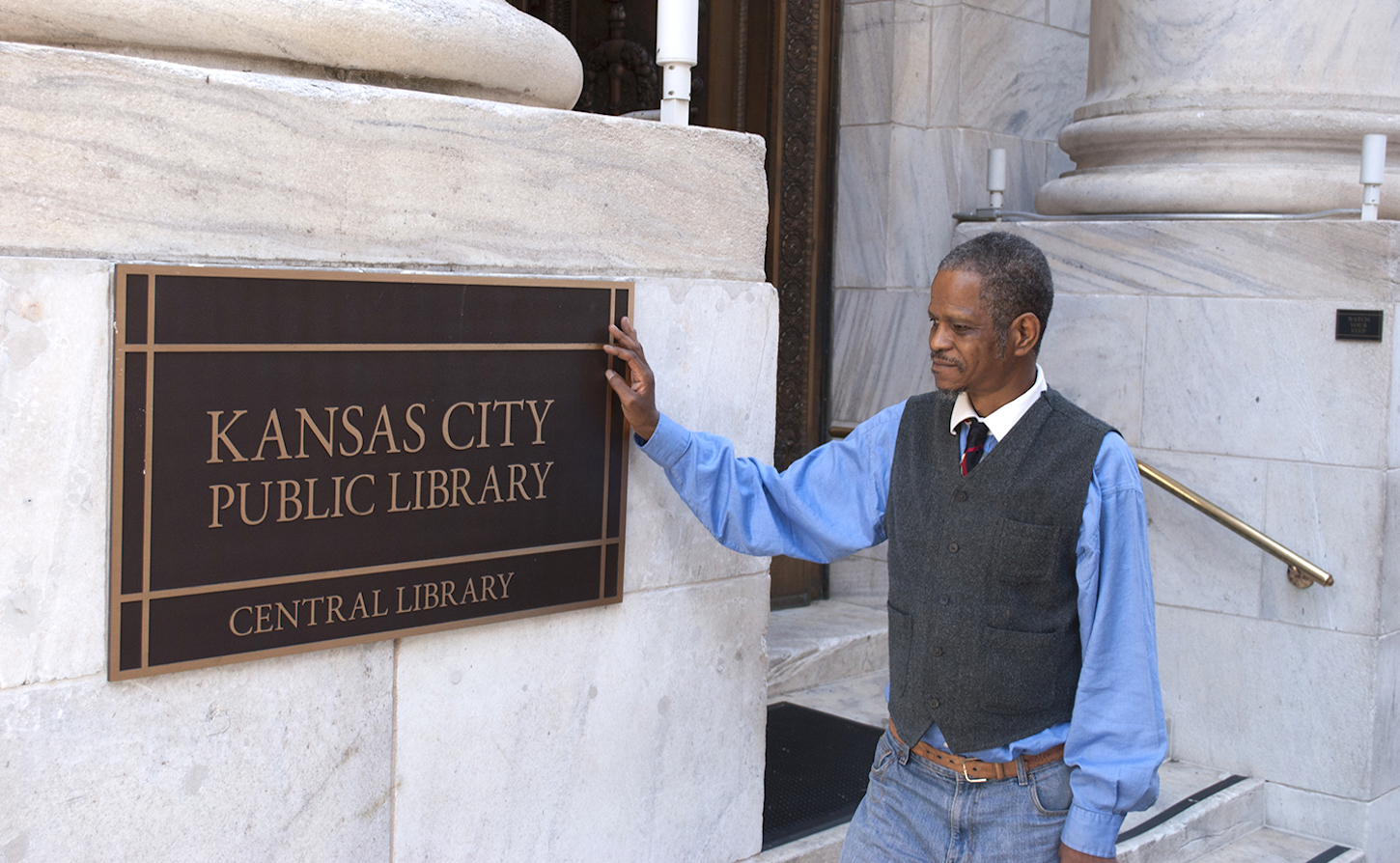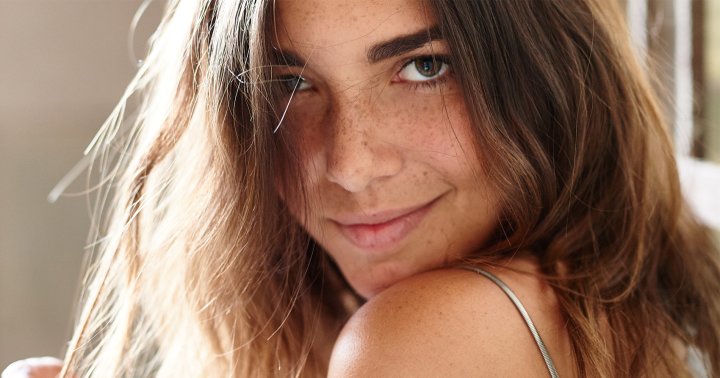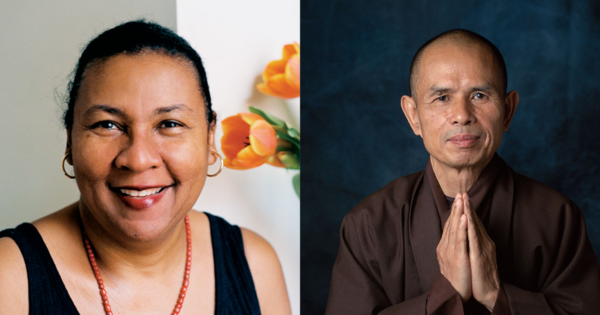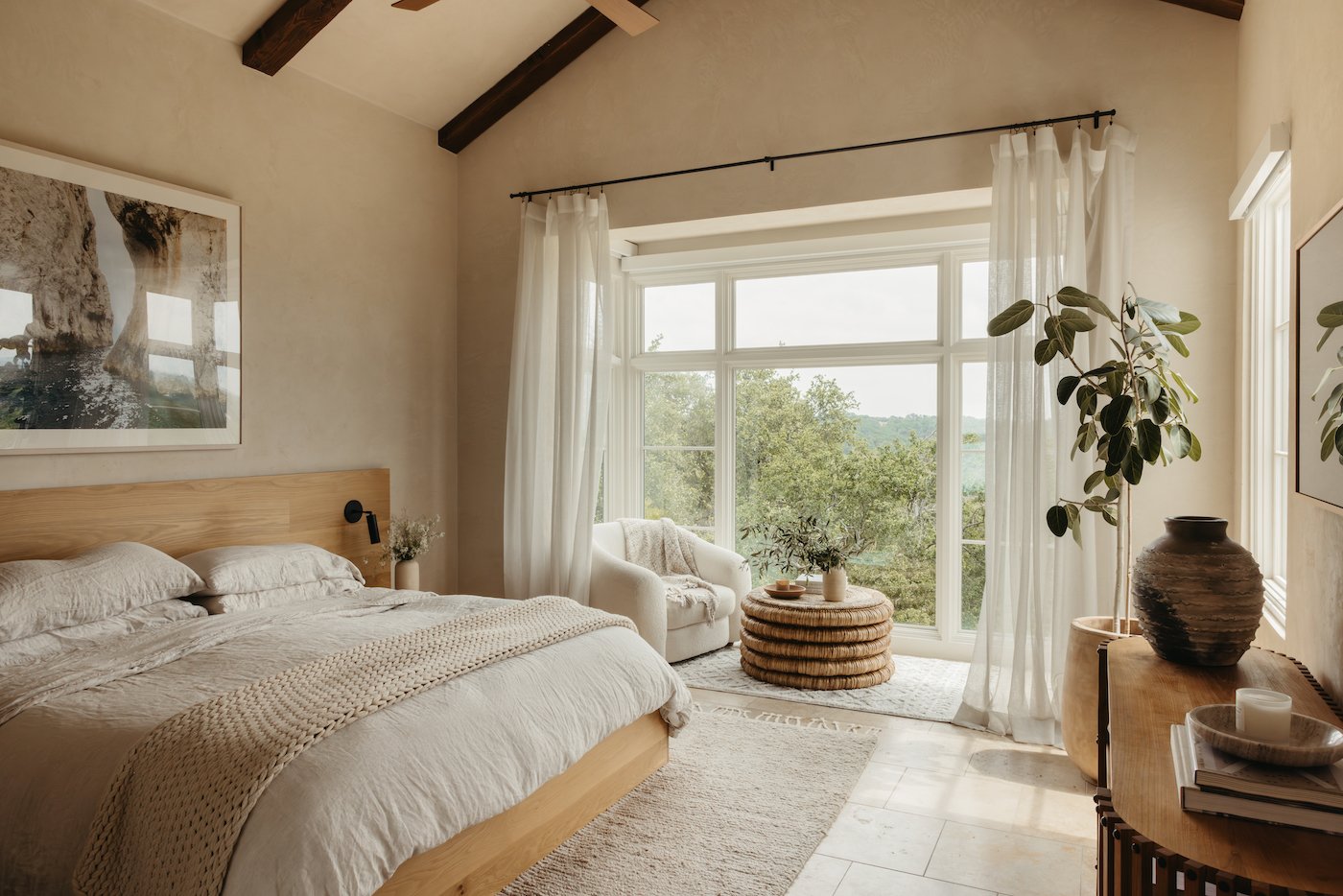The Karma of Intention: Buddhist Guide to Holy Objects: Etiquette, Placement and Other “Rules”
Recently, a heart-felt comment on one of our YouTube videos inspired this feature on Holy Objects Etiquette — and how it is the karma of intention that matters, not the actual situation. The commenter wrote: “I have a really...

 Shrines and altars can be anywhere even in caves, if they are treated properly.
Shrines and altars can be anywhere even in caves, if they are treated properly.Here is a temple in a cave in Dambulla Sri Lanka. Notice the statues are all as high as possible, even in the low cave. In your home, when locating a shrine, the main rule is the shrine should have the best position in the home. If you live in a bachelor apartment, the best corner, ideally up high.
Recently, a heart-felt comment on one of our YouTube videos inspired this feature on Holy Objects Etiquette — and how it is the karma of intention that matters, not the actual situation. The commenter wrote:
“I have a really big question. … I live in another’s house by paying rent. I love Buddha and Bodhisattvas very much. The pit latrine/porous lining in the bathroom of this house is located under the room where I live. I always have offerings to Bodhisattvas ,mantras. Because there is a big dirty thing under my room, will it hinder my puja activities? I can’t even look for new houses at this time, the owners of the house won’t give me new rooms. [Does this mean] I won’t I be able to get the Bodhisattvas’ blessings?”
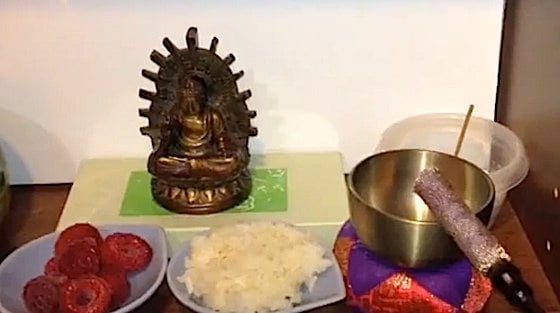 A very simple shrine can be respectfully presented if you follow rules such as — best position in the room, raising the statue, making offerings. The important thing is not to make excuses for not practicing, but to just do it, regardless of access to shrines, teachers, and sangha. As a note here, the statue, ideally should have been placed higher than the offerings.
A very simple shrine can be respectfully presented if you follow rules such as — best position in the room, raising the statue, making offerings. The important thing is not to make excuses for not practicing, but to just do it, regardless of access to shrines, teachers, and sangha. As a note here, the statue, ideally should have been placed higher than the offerings.
We answered:
“There is no problem with the toilet from the point of view of Buddhism because your intention is good. Many people live in bachelor apartments, where you can’t help but “face the toilet” and most apartment buildings are “on top of a toilet.” What matters is you are making Holy offerings with sincere intention.
You said “I love Buddha and Bodhisattvas very much!” That is what truly matters. Your intention is to honor them. Your practice is already precious.
For instance, a rich person with fifteen golden toilets in their house can build a special shrine room, following all the rules, but if his intention wasn’t pure, his love wasn’t sincere, his shrine room is nothing more than a warehouse room.
On the opposite extreme is the ascetic hermit in his cave with no statue or shrine, but who practices with a sincere heart. What matters is the heart.”
 Buddha in the rain? Often temples and homes have outdoor statues but they must be raised up, and cared for with bird droppings cleaned and offerings still made. In other words a Buddha Statue should NOT be decoration, but it can be an outdoor veneration object.
Buddha in the rain? Often temples and homes have outdoor statues but they must be raised up, and cared for with bird droppings cleaned and offerings still made. In other words a Buddha Statue should NOT be decoration, but it can be an outdoor veneration object.
Lama Zopa’s Story of the Rain and Buddha Statue
We carried on our answer with this anecdote:
“There’s a wonderful story, retold here from Lama Zopa Rinpoche where he shows that it’s your own intention that matters:
“There is a story about a Buddha statue that was outside. One person saw the Buddha statue; it was raining and the statue was getting wet. The person felt how bad it was that the statue was being rained on, took off his shoes, and put them on the head of the Buddha statue to protect it from the rain. After the rain had stopped someone else came by, saw the shoes on the statue of the Buddha and thought, “How terrible, someone has put shoes on top of the Buddha statue”; so he took the shoes off the statue. Because both acts were done with a positive motivation both actions created good karma. The man putting the shoes on the head of the Buddha did it out of respect, so the statue wouldn’t get wet. Normally, putting shoes on a Buddha statue is a disrespectful action and would create negative karma.” [1]
 INCORRECT PLACEMENT OF A BUDDHA. Buddha should NEVER be place on the ground or the floor, even temporarily. Use a cloth or pedestal for temporary, and raise up for permanent placement.
INCORRECT PLACEMENT OF A BUDDHA. Buddha should NEVER be place on the ground or the floor, even temporarily. Use a cloth or pedestal for temporary, and raise up for permanent placement.
Quick Facts on Dharma Etiquette
Statues of Buddha should not be used as decorative items, such as random garden decorations. They should be placed in a respectful and appropriate setting, not in places like the bathroom or kitchen. (This may have inspired our video commentor’s question.) Shoes and hats should always (without exception) be removed in temples but also in home shrine rooms or any room with a shrine. Buddhist Texts are often placed HIGHER than statues, since Dharma is considered the most precious of all. At the very least, NEVER place a Dharma text lower than mundane objects, treat with reverence and clean hands. Always bow three times when you enter a room or approach an altar with a shrine or a Dharma teacher or Holy Object. If your are unable to bow, bring your hands together and bow your head at minimum. Always bow when you enter a room (even a bedroom) with a shrine with Dharma Objects. Dharma Objects are anything with Sacred text, including mantra jewelry or prayer wheels. For example, a prayer wheel or a mala may never be placed on the ground or stepped over. Buddhist holy objects, such as statues and thangkas, are traditionally placed on an altar or shrine in a clean, well-lit area. The ‘karma of intention’ refers to the Buddhist belief that the intention behind an action is what determines its karmic effect. Before touching or moving a Buddhist holy object, it is customary to show respect by bowing or making a gesture of reverence. Offerings such as flowers, incense, candles, food, and water are traditionally made to Buddhist holy objects as a sign of respect and devotion. Buddhist scriptures, or sutras, should be handled with clean hands and never placed directly on the floor or under other books. Buddhist holy objects, such as statues and malas, are considered sacred and are treated with utmost respect. Cleaning and maintaining Buddhist holy objects is considered a meritorious act and should be done with care and respect Mantras are often recited when interacting with Buddhist holy objects to imbue the action with spiritual significance Dharma texts must be handled respectfully, as sacred objects, never placed on the floor, never stepped on and never piled up.
Dharma texts must be handled respectfully, as sacred objects, never placed on the floor, never stepped on and never piled up.
What Dharma Etiquette does matter?
Intention is the most important aspect of Dharma Etiquette. If we accidentally kill an insect, have we broken the Buddha’s eight precepts because we “killed?” The answer is dependent on our intention. If we viciously decided to pursue and kill the insect, then, yes. If we killed it by accident, certainly no, even though the insect was killed. If we killed the insect due to our mindlessness — not being aware — there’s only a slight karmic impact.
 Even in a home, we remove shoes and hats before entering any room with a Buddhist shrine or altar.
Even in a home, we remove shoes and hats before entering any room with a Buddhist shrine or altar.
In other words — everything comes down to intention.
If we thought about lying, but then didn’t is that breaking the precept on “right speech?” The answer is no, because we didn’t speak it.
So, back to Holy Buddha Objects and Etiquette? If we live in a Bachelor apartment, or in a mobile home, or in our parents bedroom, and we set up a shrine in an unsavory place, with the intention of honoring the Buddhas and Bodhisattvas is that bad karma? The answer is no. Certainly, we should reserve the best spot in our room for the Buddha, but if it’s the best we can provide, it is enough.
 Offerings should be placed lower than the Dharma objects such as Buddha Statues and Buddhist Texts.
Offerings should be placed lower than the Dharma objects such as Buddha Statues and Buddhist Texts.
Dharma Object Etiquette
According to His Holiness the Dalai Lama, holy objects should never be placed on top of Dharma texts. This displays deep respect for the teachings and the wisdom they embody [1]. The practice of offering various items including robes, water, flowers, incense, light, perfume, music, and gold to Dharma texts or statues can be seen as a way to collect extensive merit. Karma is expandable, and prostrating to holy objects can bring happiness in future lives, often resulting in a favorable rebirth such as a deva or a human [7]. Always place your shrine or Dharma Object, especially Buddha Statues and texts, in the best location in a room or living area. It’s not the actual location that matters — just the effort you made to give the Dharma objects the best you can. Lama Zopa: “When you are not prostrating, but just entering the room where you have all the holy objects (the gompa or your meditation room), if you put your palms together to the holy objects every time, in that second it is unbelievably easy to collect extensive merit.” Lama Zopa: “It is the same when you make offerings: if you visualize only one merit field, just one set of Twenty-one Taras, or just one set of the seven Medicine Buddhas, you only get the merit of offering to one merit field, one set of twenty-one Taras, or just seven Medicine Buddhas, so you only create that number of causes of enlightenment.” Dharma Etiquette: “Respect Dharma books, texts and holy objects as if they were Buddha. Please do not step over Dharma materials, place them on the floor, or on your seat, unless they rest on a clean cloth. Please do not place items on top of Dharma books/materials.” [2] Normally, we bow and kneel at the beginning of our daily practice to show respect for the Compassionate Bodhisattva Guan Yin.
Normally, we bow and kneel at the beginning of our daily practice to show respect for the Compassionate Bodhisattva Guan Yin.Eight Benefits of Offering to Dharma Objects
The eight benefits are explained in the sutra teaching Offering the Butter Lamp:
(1) One receives a good body of high caste, which people respect and obey and which includes having perfect organs and a beautiful or handsome form.
(2) One will have perfect surroundings and helpers.
(3) One will be able to live morally.
 Rules at a temple in Luang Prabng Laos.
Rules at a temple in Luang Prabng Laos.
(4) One will have devotion, or faith, which is the main factor for completing the accumulation of merits. (Being without faith is like a vehicle without fuel—unable to function—or like everything in a city not functioning and collapsing when there is no electricity.)
(5) One will have a very brave mind for practicing the Dharma and working for other sentient beings, a brave mind for facing up to the delusions.
(6) One will be reborn as a deva or a human being.
(7) One will achieve the arya path.
(8) One will become enlightened.
 If we are physically not able to fully prostrate, at least we bow our heads to folded hands when we enter a shrine, approach an altar or a teacher.
If we are physically not able to fully prostrate, at least we bow our heads to folded hands when we enter a shrine, approach an altar or a teacher.
Statistics of Interest
The use of Buddhist holy objects such as statues and malas is common among 70% of Buddhists Around 80% of Buddhists believe in the power of karma and its influence on their actions and intentions (Pew Research) Approximately 60% of Buddhists regularly prostrate before holy objects as a sign of respect and devotionSOURCE

 KickT
KickT 









